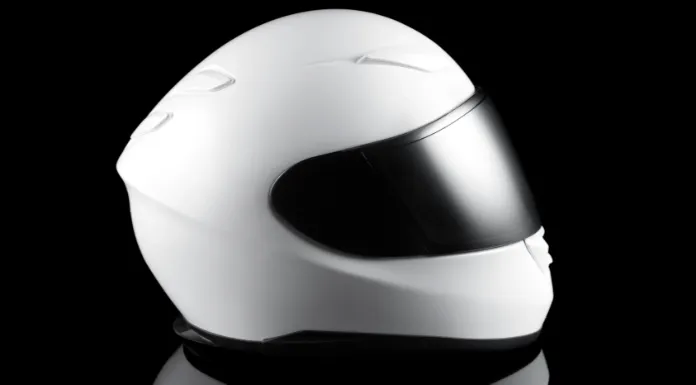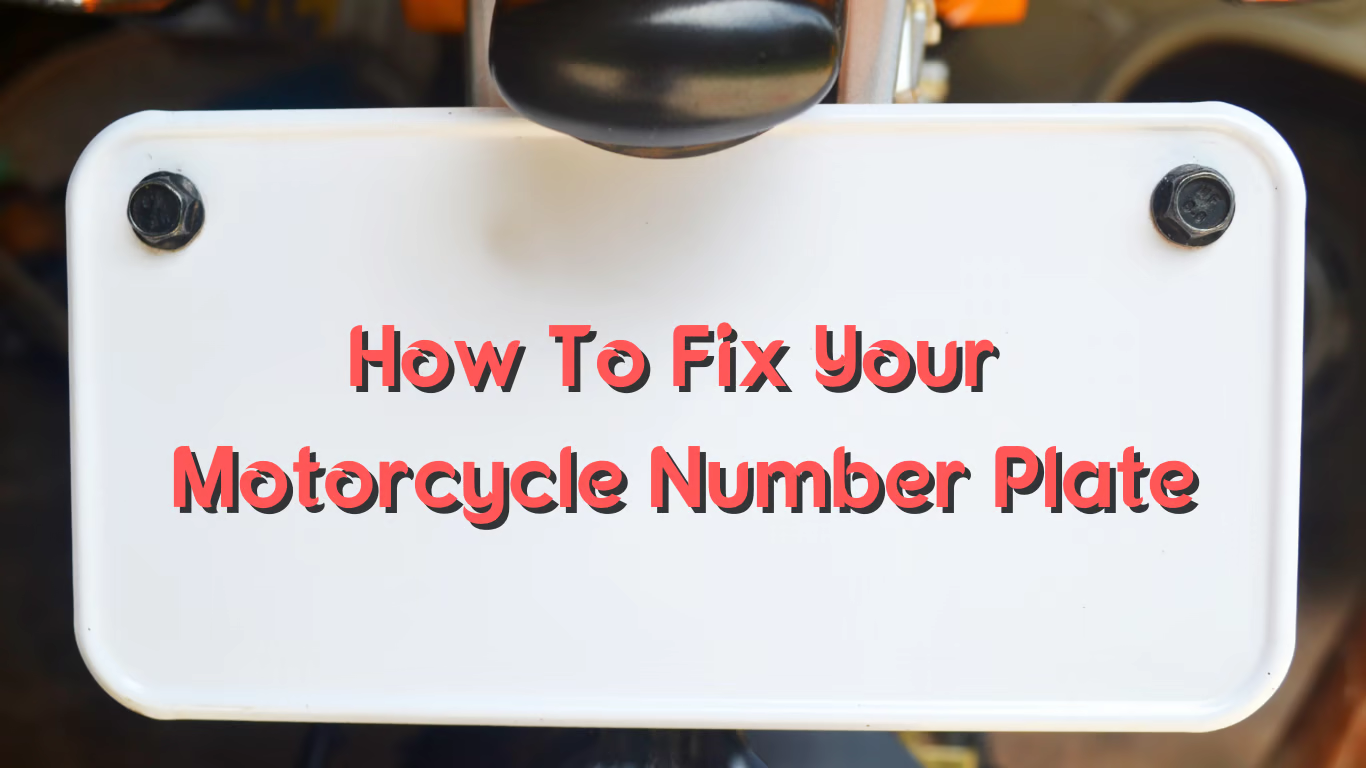Having your helmet become sticky is annoying and can interfere with your ride. There are a number of potential causes for your helmet to stick. Because I’ve seen this issue firsthand, I’ve compiled this list of five potential causes.
Sweat is the most common, and if not wiped away frequently, it can cause a sticky sensation. Let us show you how to avoid sticky buildup on your helmet by keeping it clean.
How To Tell If Your Motorcycle Helmet is Sticky?
There’s no avoiding the fact that a helmet will get slightly sticky after a while of use. But why is this happening, and can you do anything to change it?
Your helmet could be sticky for a variety of reasons. Perspiration was once thought to be a possible cause. Putting on a helmet increases the temperature and moisture levels in your head.
As the sweat seeps into the helmet, it might leave a sticky residue. Sticky helmets can be useful if you happen to be a resident of a particularly humid region.
It also implies that there is more humidity in the air, which might make your helmet feel sticky once more.
In the beginning, it may just be the extras on your helmet. It’s worth noting that the accessories used to create some helmets are more likely to stick than those used to create others.
What To Do When You Find Your Mototrcycle Helmet Sticky?
Nonetheless, if you don’t like the fact that your helmet is sticky, you can take several measures to improve the situation. When first used, try wiping it down with a damp cloth.
The built-up sweat and grime on the helmet will be more easily removed in this way. The use of a helmet liner is another option. You can use this piece of cloth to line the outside of your helmet, where it will assist absorb sweat and keep your helmet clean.
For that matter, you might want to try a helmet spray. To prevent your helmet from being sticky, use this product that you can easily see on the market. It means that there are a wide variety of potential causes for the stickiness of your helmet.
Nonetheless, there are several things you may do to counteract the problem. Use a helmet liner or a helmet sprinkler to clean it after each use.
A ski helmet, like ski goggles, is a protective piece of equipment. You should feel confident doing the math necessary to ensure you are covered in the event of an accident. Many things can cause a ski helmet to become stuck on your head. Chemical contamination and acidic sweat are two examples.
It’s usual for helmets to get sticky when the rain stops being hot. Perception may be altered after years spent in the freezing sun, which eventually warms back up to a more comfortable temperature. If your helmet is overly snug, it won’t be able to take in much moisture.
Many things can cause ski helmets to become sticky, but you can take steps to minimize this risk. If your helmet gets dirty or covered in debris, you can wipe it off with a damp sponge or towel.
However, if your helmet develops a sticky residue over time, it needs to be replaced.
Why is Your Motorcycle Helmet Sticky?
Listed below are the five most likely reasons why your motorbike helmet has become sticky:
1. Acid sweat
Acid sweat over time will make your helmet sticky whereas additionally sweating over time and you ride long rides on your bike then also you’ll see sticky signs on your helmet.
You should look for ventilation developed in your next helmet.
2. Exposure to Chemicals
A sticky helmet can even be fashioned attributable to your helmet being exposed to chemicals like solvents, cleansing agents, chemicals that damage the helmet, and the other material that you simply suppose is perhaps in-tuned with the helmet and should injure it.
3. Locksmith Helmet Storage
Keeping your bike helmet closed and little sort of a wardrobe over time are often why your helmet is sticky actually because there’s not enough air and since of the confined house it will cause a mold which may create the helmet sticky
4. Helmet Storage at Extreme Temperatures
Your helmet has been exposed to extreme temperatures for too long and it also can be too cold or hot temperatures will cause a sticky helmet, for instance.
You ride along with your helmet daily for hours within the sun, therefore, the sun’s fumes will injury the helmet and create it sticky and sticky symptoms will see constant in an exceedingly few months the alternative of cold temperatures that create the helmet sticky.
5. A recent helmet that wants replacement
Your helmet shows sticky signs and it’s older over three to five years therefore I’d suggest you replace it with another helmet.
How To Clean Your Sticky Helmet?
- WD40 – Using the WD40 will greatly help you remove the sticky corridor from the helmet So I recommend that you take it and use paper and rub the sticky corridor together with the material
- Use acetone – acetone won’t only remove the sticky corridor from the helmet but Also remove sweat from the helmet and make it cleaner.
- Use alcohol – In my opinion, the stylish way to remove it fully sticking to the helmet itself is to take a tar of alcohol and wipe away the sticky corridor
- Wash the helmet – I recommend washing the helmet with you She chose to rub the sticky corridor with alcohol or bomb while making sure to use cleaner and a cloth to help remove the sticky corridor
- Make the sticky corridor in a helmet – Another way to help you exclude the sticky corridor is to paint all the sticky corridors in the helmet.
Items Needed Before Cleaning The Helmet?
It totally depends on which method you are cleaning your helmet.
But a few common things everyone should keep in hand is screw driver (if needed), water tub, an old toothbrush, a paint brush, some cotton buds, a non-abrasive sponge, clean & soft wiping clothes and shampoo.
Steps To Scrub Your Helmet:
1. Remove the Helmet’s interior
The helmet interior styles disagree in line with the manufacturer. several have removable internal liners and cheek pads whereas some makers don’t.
You see one or two helmets have pads and liners connected with snaps. you will even see a couple of helmets use hook-and-loop material.
Drape soaked rag over the outer shell of the helmet you’ll use rags to wash motorcycle helmets. We tend to suggest you utilize soft microfiber rags.
It traps the dirt particles and you’ll not have to worry about obtaining your face protection scraped.
2. Clean the inside
Many helmets recently have removable liners. So, cleansing the inside won’t be a troublesome task.
All you wish to try to do is pour a couple of drops of baby shampoo during a bucket full of heat water. Dunk a helmet liner and cheek pads within the instrumentality.
Scrub, swish, and squeeze every interior a part of the helmet you have got taken get in
3. Clean exterior
Now, we tend to take away the rag and use another piece of rag to wipe out the dirt on the outside.
If you see any leftover dirt, you’ll use a budget toothbrush with soft bristles. It hard-to-clean places like nooks and crannies. you’ll conjointly use it to scrub helmet face protect gaskets and vents
4. Cleaning vents
You can conjointly use compressed gas to scrub dirt chunks within the vent channels of your helmet.
The vital factor here is, it’s higher for you to not use aerosol canned compressed gas. it damages your helmet and destroys the EPS liner.
5. Clean face protect
If you’re doing it for the primary time, consult your manual before cleansing your face protection or helmet. Several makers turn out ultraviolet coating or Anti-fog coating on the face protector. check that you do not avoid your specific assurance.
You can drape wet rags over the face for one or two minutes and wipe off any dirt and smudges left behind. If you’ve Pinlock shields, take away the inner lens 1st. Then, clean either side.
6. Wipe down the interior sun protect
If your drop-down visor is dust-covered, spritz water and wipe out the dirt with a microfiber artifact. The interior sun shields aren’t terribly dirty however a cleansing helmet provides you a snug ride.
You can tack dry liners, cheek pads, face shields, and different items. Now, you’re prepared for a nice ride with a helmet.
How Long Does it Take For a Helmet to Dry?
Never, ever, be tempted to dry a helmet employing a blow dryer. The recent air from such a tool may soften the protecting vinylbenzene layer, rendering the helmet useless.
Place the helmet on a dry towel and prop it up slightly to permit the air to flow into. Currently leave it to dry naturally.
This could take many days, therefore you’ll be able to place it in a very hot space, however don’t stick it in a very hot location like close to a radiator or on a boiler. If you have got a table fan then this is often the proper tool to blow a gentle stream of air through the lid to assist drying.
In atmospheric conditions you’ll be able to leave the lid outside, however avoid it in direct daylight. Once many days the liner ought to be nice and dry, check it completely for powerlessness then reassemble the helmet.
How To Prevent My Helmet From To Be Sticky?
The only way to prevent a helmet from becoming sticky is to clean it at a regular interval of time with any of the above processes.
There are a number of things you can do to your helmet and prevent not only the stickiness of the helmet but you can prevent more helmet problems such as wrecked, helmet cloth and more.
A great thanks to nearly always forestall the seriousness of the bike helmet is to wear a swing underneath the helmet that may separate the interior components of the sweat that’s created throughout riding can even prevent from cleansing.
Is it Safe To Ride with A Sticky Helmet?
Yes, as compared to unsticky helmets, sticky helmets are dangerous but it does not affect your driving.
Sticky helmet makes you uncomfortable. It can damage your hair or you can have some serious disease.If you are unable to clean it frequently you should replace your helmet
Do Stickers Damage Motorcycle Helmet?
However, keep in mind that stickers are decorative. You should not try to use them for anything other than that.
This means you must not use stickers as tape or to mend something broken on your helmet, sort of a broken vent slide or visor. you must conjointly avoid swing stickers on your helmet to avoid obstructing your vision.
The most harm stickers will cause is to exploit their sticky residue behind if you are attempting to get rid of them. mistreatment of harsh chemicals to get rid of the sticky residue may be harmful to the helmet, because it will break down the end and materials within the item.
Likewise, employing a razor or sharp object to get rid of stickers and decals can even be harmful to the helmet and yourself. Since stickers may be tough to get rid of while not hurt, suppose before you stick.
Conclusion
I hope this article has helped you understand why your motorbike helmet is sticky and what you can do to fix it. Please tell your friends and family about our article if you enjoyed reading it and want them to experience the same joy you did.
For more in-depth articles and to stay in contact with us, please subscribe to our newsletter.






